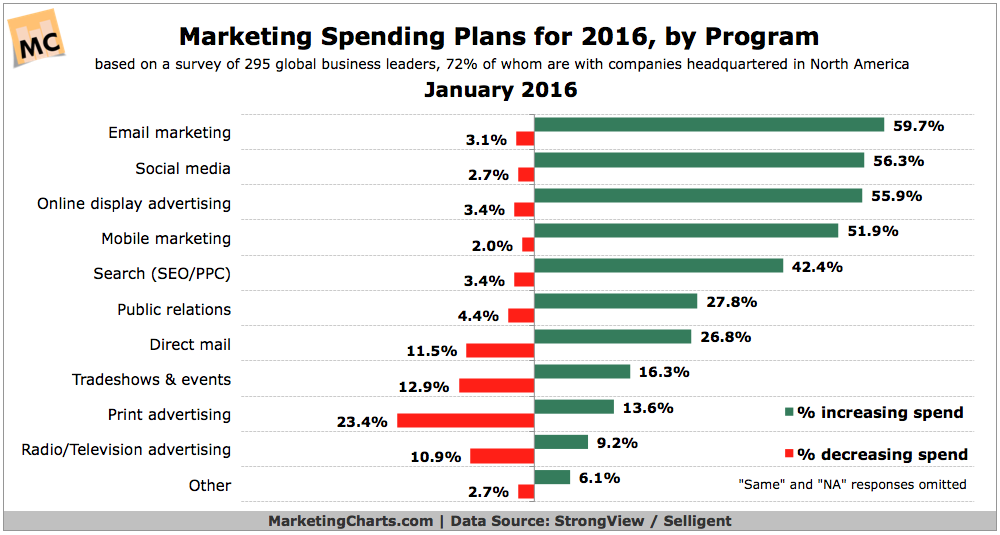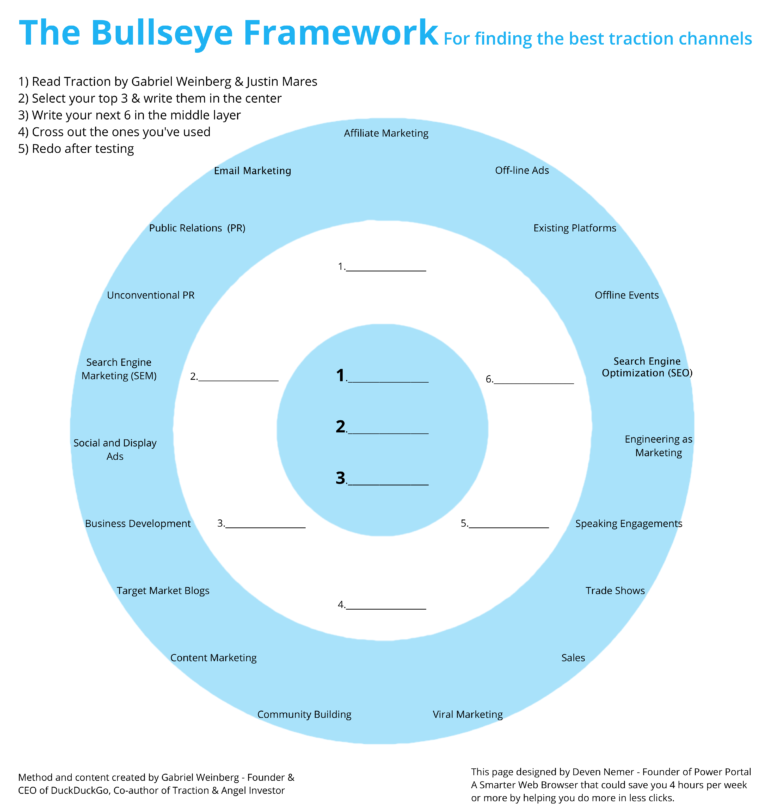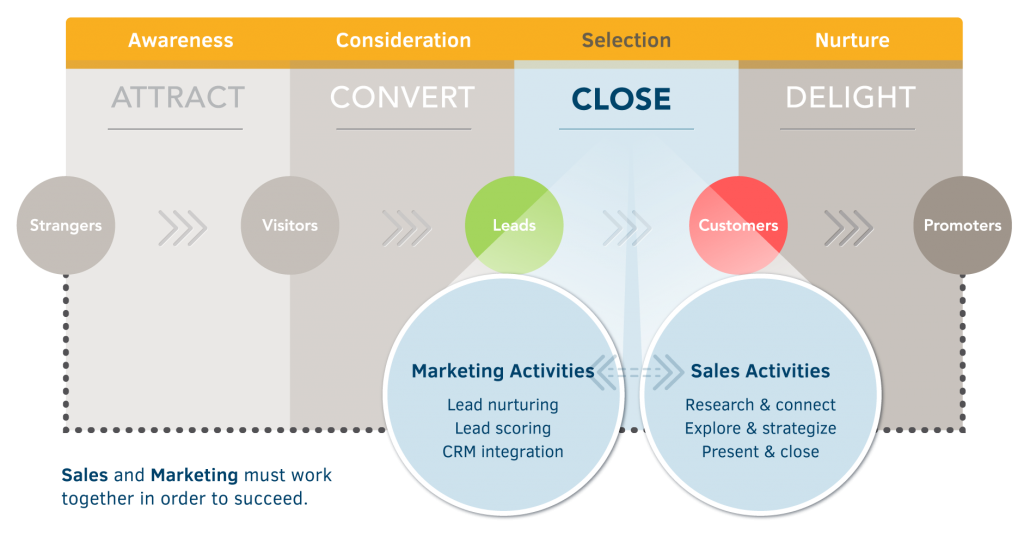How to improve sales and develop an effective marketing program
10 Tips For Developing Your 2017 Sales And Marketing
Are you serious about growing your San Diego business? Do you want to start off strong in 2017? Then it’s time to think about putting together and developing an effective marketing program that you can manage along with the daily operations of running your company. If you are not a well known company or brand, then you are going to have to work to find paying customers. People buy a BMW or the latest Apple product without ever touching it because brands are a proxy for trust.
The best way to get this started is to set up a meeting with your sales and marketing teams for a series of planning and brainstorming sessions so everyone is on the same page regarding goals and strategies. In this meeting, your team will make it a point to figure out sales’ targets, goals, objectives and key performance indicators. Here are some steps your company can take in order to collectively develop a sensible sales and marketing plan to achieve your 2017 goals.
1) Plan Your Budget Accordingly
You will want to make sure that you have allocated enough resources (capital and sales people) to accomplish your company’s sales and growth goals for the year. Your marketing budget’s size will depend on a few factors, such as the size of your investable funds and the cost per acquisition you are willing to allocate to garner leads and sales. If you have champagne dreams on a beer budget, you are probably going to be disappointed by your lack of progress. Your marketing team will be frustrated by their inability to meet your sales and revenue expectations, as well. There are several factors to consider before deciding how much of your company’s budget should be allocated to marketing. These factors include:
- What industry are you in?
- What is your total revenue size?
- What goals do you want to achieve?
When attempting to figure out how much of your budget you should allocate to your marketing expenditure, here are some suggestions:
- For new companies that have been in business for less than 5 years, we suggest using 12 to 20 percent of your gross revenue or projected revenue on marketing.
- For established companies that already have some some market share/brand equity, we suggest allocating between 6 and 12 percent of your gross revenue or projected revenue.
- For companies in highly competitive industries, such as retail, consumer products, and pharmaceuticals, marketing spend should increase to anything between 20 to 50 percent of the company’s net revenue when launching new offerings.
2) Choose Your Tactics and Channels
The best marketing programs reach prospects with a smart mix of channels, strategies and tactics. You have to have use more than one type of sales tactic to move most Business to Business customers through a typical sales cycle. Most small to mid- sized businesses have 3 types of potential leads or prospects: cold, warm and hot. Cold prospects have never heard of your business and do not know anything about your services or product offerings. Warmer leads are a little more familiar with your company and can fit about halfway through way through the sales cycle or funnel. Your company’s hottest leads often come from referrals or clients who are ready to close on a deal or purchase with you. These clients allow you to successfully pass them through the sales cycle by exposing them to multiple marketing messages and sales contacts. Or, they were recommended or referred by someone they trust and simply need a bit more information, personal attention or negotiation to make a purchase or sign a contract. We live in a digital economy, and nowadays customer journeys consist of a progression of touch points that add to the experience customers get when they interact with businesses.
When you’re creating a marketing program for your organization or startup, it’s advised to include at least one or two marketing tactics or channels to reach leads at different stages of the sales funnel. Cold prospects, for example, might be reached with online advertising or direct mail, warmer leads via an email drip marketing campaign and hot prospects more likely to respond to a case study or PowerPoint slidedeck, along with a face-to-face meeting to add a personal touch so to close the sale.
How Much of Your Budget Should You Put Into Each Channel?
How do companies allocate marketing budgets across different channels – offline and online? A report by Forrester shows the estimated allocation of marketing funds offline vs. online and across the digital channels.

Here are some conclusions from that report:
- In 2016, the average firm was expected to allocate 30% of their marketing budget to online, this rate is expected to grow to 35% by 2019.
- Search engine marketing will capture the largest share of online spending with online display (banner ads, online video, etc.) taking the second largest share.
- Social media investments will continue to grow as an overall share of online spend, but will only represent about 15% of the total online spend.
- Mobile marketing has grown to a point that it’s no longer tracked in the forecast and it’s presumed to be considered across all channels.
Business Development
Strategic partnerships can provide businesses the ability to share control of some aspect of a value chain with another organization to deliver your company’s brand, product or service to more customers. Partners can appear in all forms in a business. Licenses, joint ventures, referrals, distributors, contract manufacturing, fulfillment houses, software developers, customer service centers, marketing agencies and revenue affiliates. It is recommended that you have a business development team to help find and review opportunities, make the big decisions and drive beneficial “partnering” alliances.
3) Update and Review Your Ideal Customers’ Buyer Personas
Take a look a back at your best customers and see if you can pinpoint the characteristics that make them profitable and enjoyable to work with. It’s a good idea to talk with your salespeople, business development and customer service staff about this. As an example, say you are in the business of selling to other businesses (B to B). You will want to make sure you have an idea of the ideal customer profile (an example could be a company with over a 1 million in revenue) and the buyer personas. Confirm that these accurate and up to date, to reflect the kinds of ideal customers that your sales team are attempting to attract, and targeting to help your organization reach your sales goals.
It’s also helpful if you start at the end – what is it that the customer does right before signing a contract with you? What is the step before that? And the one before that? At each point along the customer sales cycle (awareness stage, consideration stage, decision stage), you should identify the persona’s motivations, pain points, questions and potential objections. Your “marketing sales funnel” is made up of several stages through which would-be customers move from first awareness of your brand to post-sale evangelism. Then you can start to figure out what types of content you’ll need to create to educate and convince them at each point along the buyer’s journey. Besides looking at progress during each touchpoint, you should also be paying attention to the complete, end-to-end experience customers have with your company through their eyes. Customer journeys can consist of bringing a new customer on board, resolving a technical issue, upgrading a product or helping a customer to move a service to a new home. The benefits for the companies that provide the customer with the best experience from start to finish along the journey can expect to:
- Enhance customer satisfaction
- Improve sales and retention
- Reduce end-to-end service cost
- Strengthen employee satisfaction
4 ) Confirm your Company’s Value Proposition or Differentiator
Business executives need to think about makes your company different, have a perceived value or competitive advantage over your competitors. This is what the differentiator is, does your company offer a unique business or delivery model, specialized service or proprietary technology or a reputation for hiring the brightest minds, that sets your company apart in your marketplace. Talk with some of clients and find why they chose to buy from your company — and what circumstances could make them possibly switch teams and use one of your competitors instead. Conducting this customer research can not only uncover a proven differentiator, it will reveal potential blind spots and weakness that need your attention.
5) Review and Organize Your Marketing Materials
You should have a meeting to review all of your company’s printed and digital marketing materials, and make sure they are designed and written to attract your ideal prospects and communicate your brand’s unique qualities. Make sure copyright dates are correct, and the company style guidelines are being followed, and that everyone on your sales team are using the most updated marketing materials. Technology has changed the customer journey, today’s hypercompetitive consumer markets are now multi-touchpoint, multichannel and always-on, so make sure the branding and messaging is consistent across all marketing channels both online and offline.
Review Your Website and Online Marketing
Each year is a good idea to review and update the look of your website and other marketing channels. Are your ads and brochures still designed to attract and educate your target audience personas? Is your branding and messaging consistent? Are you actually engaging the right type of customers and demographics? Is your content compelling and educational? Do you have written product messaging & sales pages that:
- Trigger your customers’ real-life motivations and pain points
- Convey value propositions that capture visitors’ attention and pull them in
- Have a persuasive narrative and flow
- Use raw data and research to further convince increasing conversions
7) Review and Document Your Sales Process
Have you updated your sales process to make sure that it is setup to close the quality and quantity of of customers that your company needs to reach your growth and revenue goals? Is there a documented process for everyone on your sales team to follow for qualifying and nurturing potential prospects? Is your customer relationship management (CRM ) system set up to properly support your process in an effective and efficient way? Could you be adding any automated tools to make the process less time consuming?
8) Document Your Marketing and Sales Strategy
The trick to being able to successfully balance and tie together all your marketing tactics is to have a written plan with an achievable timeline. By documenting and prioritizing the issues you’ve identified, you then can start to develop a tactical phased approach spread out over next four quarters, as an example. You may need to develop different strategies for different types of marketing channels, lead nurturing, email marketing, content marketing, lead generation, target market blog guest posting, social media, PR, business development and SEO. Here is Bullseye Framework from Buffer that covers this idea thoroughly:

Your marketing plan can consist of 5 parts:
- Situational analysis – this section provides a brief overview analysis of your company’s strengths, weaknesses, opportunities and threats.
- Target Audience: this depends if your target customer is businesses or consumers. For consumers it be defining the audience demographics, such as age, gender and household income. Or, what particular publication or media opportunity will help you reach your best prospects.
- Goals: This means documenting a short list of the marketing sales goals, such as “increased new accounts by 10 percent by December 16th,” so you can evaluate the performance of the campaign.
- Tactics and Strategies: Outline your company’s overall marketing strategy and the list of tactics you’ll use to reach potential prospects or leads as they move through your sales cycle. Tip: it’s good to use software or a timeline to keep up with production dates.
- Budget: Price out the execution of the mix of marketing activities you are planning to deploy. If any appear to take you over budget, don’t get panicked. Remember, there’s a tactic to fit every business’ budget. You can always rethink and change your plan until you have a mix of strategies you can afford and that’ll will effectively reach out and motivate your prospects year-round.
9) Identify Triggers to Hand Off Leads to Your Sales Team
Now that you have mapped out your target customers buyer’s journey, and you, in the process of developing educational and convincing content that targets specific questions at the different stages, you need to figure out when it makes sense to pass along those leads to the sales reps. Say you created a specific digital content asset (blog posts, infographics, videos) that generates leads at the Consideration stage, try forwarding all those leads to sales to see if they can speed up the purchasing timeline or start a relationship/conversation with the prospect. Once you have the correct plan and system in place, you can leverage sales enablement tools to help move people through the process faster.

Sales enablement can be thought as a systematic approach to increasing sales productivity, by supporting the sales team with the processes, tools, technologies, content, training and analytics they need to have, the more successful sales’ conversations will be.
10) Tracking Your Progress and Evolving Your Tactics
You will want to set regular meetings with your team to define metrics or key performance indicators for measuring success, assign individual team members to be accountable in handling each issue, review progress, identify and solve any problems and align activities across teams. Learn from your company’s mistakes and victories and be agile enough to pivot your strategies, as needed, to maintain your growth and traction.
Conclusion
If you want build a more credible, appealing, brand that grows revenue and is better connected to customers, you need an effective sales and marketing approach. After that, you will have an effective marketing and branding program for your organization, which is essential and can consist of many channels including business development, content marketing, lead generation, marketing planning, market research, web development, search engine optimization, social media strategies or outsourced marketing assistance. There’s a lot of work to do here, and it can be tough to be objective about your own company when you’re so close to it.
Does your company has questions about how to prioritize, how to get it all done, or how much it will cost?










